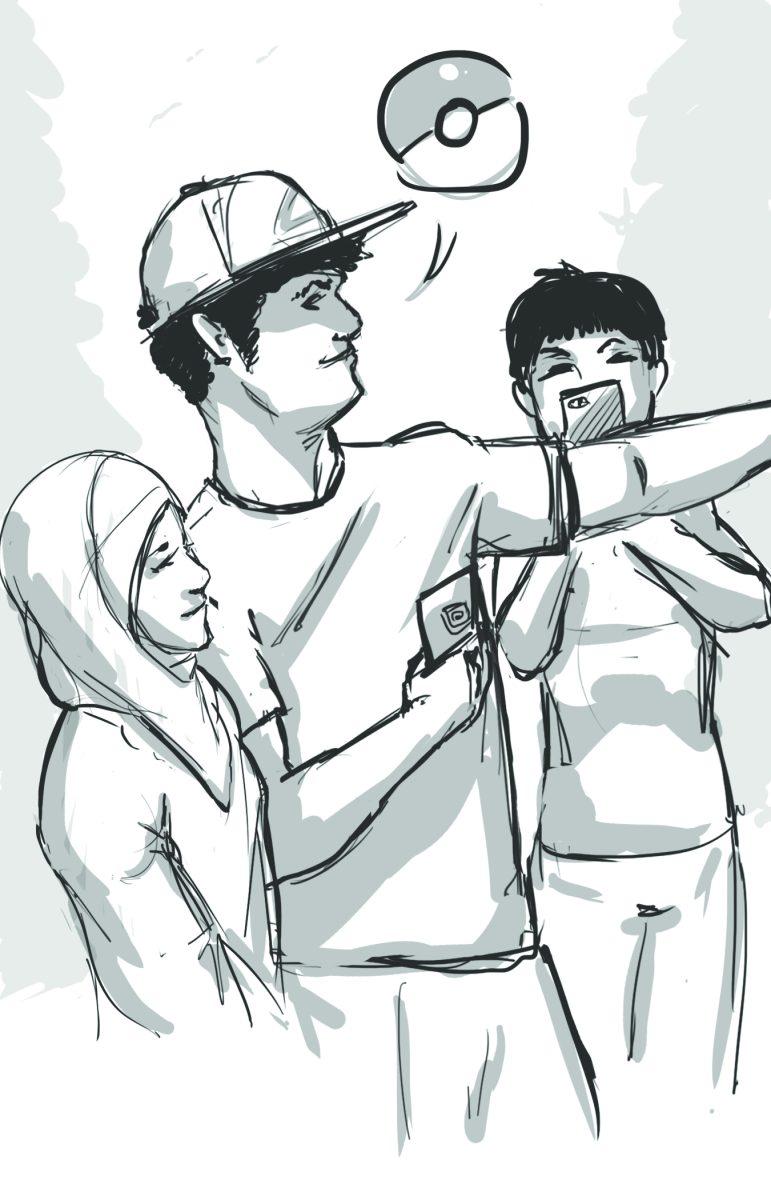“Pokemon Go” accomplished on campus in just a few short weeks what has long been missing at UTD — a cohesive sense of community.
The Pokemon Company and Niantic’s augmented reality game launched in the United States on July 6. Using an app on a smart phone, players can use Google maps to explore an area searching for the title creatures on the quest to catch them all.
Campus is a hub for “Pokemon Go.” UTD has over 25 Pokestops — locations where players can replenish on necessary items such as Pokeballs — and five gyms scattered throughout its property.
Before July 6, campus showed its usual summer sparseness. The few people you’d see walking around were hurrying to class, on a tour or attending a camp. Now, even during the hottest times of the day, students are out wandering with phones in hand, scanning the area for nearby Pokemon.
When campus cools down at night, even more people come out from apartments, homes and dorms to wander up and down the mall. But what’s really amazing is the friendly, helpful demeanor “Pokemon Go” players wear.
UTD’s student population has long been criticized for its apathy. Students don’t vote in student government elections, attend sporting events or participate in on-campus events. “Pokemon Go,” of all things, has made a dent in that signature UTD apathy.
At Residential Life’s event “Comets Go,” students actually came. For a summer event, turnout looked fairly good. What was notable at this event was what is always noticeable at night when I’m out on a walk looking for Pokemon — students were freely interacting.
At night, students on campus walk around in groups. Some are boisterous about their team affiliation — whether Mystic, Valor or Instinct — genially shouting their pride at other groups of players walking around. Although the game divides players into three different teams, the sense of competition never reaches an aggressive level.
What’s more telling, however, is the willingness of other players to share tips and help people walking around searching for Pokemon. The other day, I was in search of the elusive Machop — which my game showed hiding behind ATEC. With the help of a passing student who had just caught the creature, I was able to find him.
I didn’t learn her name and she didn’t ask mine, but we connected for a brief moment, discussing the most interesting Pokemon we’d found on campus before setting off on our separate journeys.
A student modified an existing program to build a website hosting a map that shows the real-time location of all the Pokemon on campus. The map was then shared and dispersed through the UTD Reddit page, helping players locate the exact Pokemon they seek.
Another student created a Slack channel to connect players so they could coordinate times to meet up or share tips.
Through efforts such as the map and the channel, students are beginning to form connections with one another in a way that didn’t exist before. It doesn’t matter how old the student, what major he or she is, or where he or she lives, they are welcomed into the community.
“Pokemon Go” doesn’t solve the issue of apathy. The campus still could be — and should be — more involved and active. However, the community that is being constructed around a mutual love of “Pokemon Go” is doing wonders to connect students with one another, helping them feel welcome and invested in the university.






